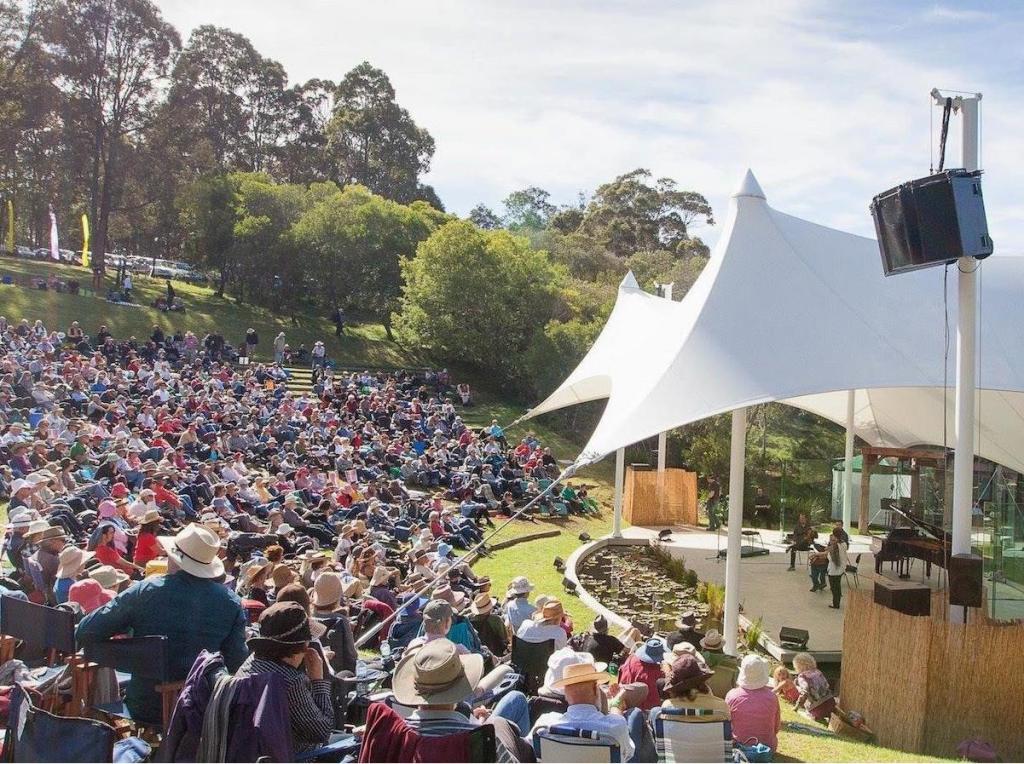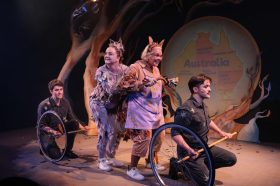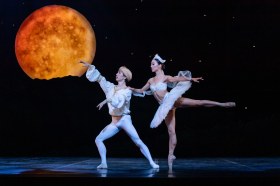Soundshell, Four Winds Festival site. Photo: Four Winds.
Cultural tourism is one of the largest and fastest-growing global tourism markets. This provides a tremendous opportunity for arts and cultural organisations.
In 2015 cultural tourists spent an estimated $11.2 billion in the state. NSW attracted more than 11.4 million cultural and heritage visitors – a 15.4% increase on the previous year.
Our capital cities have long been able to attract national and international visitors with the critical mass of arts and cultural organisations.
But the cultural tourist is just as important to regional towns where visitors can often find a rich source of authentic Australian stories.
Arts NSW recognises the vibrant, unique cultural offerings in regional NSW, and has released a Cultural Tourism Toolkit to help arts and cultural organisations make the most of the growing tourism industry.
The Toolkit is designed to assist organisations, such as volunteer-run museums, historical societies, writers’ centres, libraries, choirs and musical groups, local artist run spaces, theatres, galleries and Aboriginal Keeping Places to enhance, profile and package their arts and cultural offering.
Cultural organisations can use the Toolkit to increase patronage, encouraging the growth of regional arts and culture, and make arts and culture a vital part of the visitor to experience.
Organisations are poised to benefit from five key trends:
- Cultural tourism is growing.
- Cultural tourists stay longer and spend more than other tourists.
- Regional galleries and museums are popular tourist attractions.
- International visitors are increasingly interested in regional and rural cultural activities.
- Most cultural tourists in NSW come from within the state.

Yindyamarra Sculpture Walk, Vertical Message Sticks, 2014, River Red Gum, Galvanised Steel, by Girralang Rolyat (Carmel Taylor), Wirradjuri nation.
Five things you can do
- Think communally Your target market might just be a few hours away – two in five visitors to NSW museums and galleries identify as NSW tourists. So try to identify who is currently visiting your town, where they come from and what draws them.Organisations like local tourist associations or visitor information centres and local councils can assist you in finding answers.
Find out what tourism destination plans are already in place in your area and ask your council how you might be incorporated in these plans. Consider potential partners, resources and events that might complement or drive tourists to your organisation.
Look for synergies – hold concerts in a gallery or library, work with business on joint ticketing, breathe life into ‘unloved’ buildings or unusual venues. A visitor might actively seek out cultural institutions but not know about the smaller studios, the makers, the local fairs. You need to work together to make more visible the map that stitches your region’s art and culture together.Build a relationship with local accommodation providers, local businesses and local transport providers. Talk to everybody. If they know about and enjoy what you do they will talk about it to visitors.
- Use media effectively
Harness online media. Create a website and make sure it is kept up-to-date. Consider listing your website on Google My Business.
Post regularly on social media channels like Facebook, Twitter, YouTube, Instagram and TripAdvisor – they are free. Resources like NRMA’s Open Road are also good at tapping into a touring market.
Be consistent in your message across communication channels. It can be a good investment to pay a professional writer to get that message right.
- Be realistic
Scale is important. While it is great to think big, you also need to think ‘manageable’. Drill down on a few key ideas and strategies. Be true to your resources and your assets. Set measurable goals and time frames for achieving them. Take advantage of seasonality and peak visitor times – capitalise on existing audiences and strategically link up to other events
- Clarify Be consistent in your opening hours and what you offer. About a third of cultural tourists plan their trip one to three months in advance. They need to know when you will be open and what will be on. Clear signage is important to help visitors find their way around town. Speak to your local council in how you can tap into town signage. A great example is Albury City, which has painted arrows on the pathways between venues in the cultural precinct.
- Get feedback
Notice what works and what doesn’t. How long do people stay when they visit you? Do they come with a partner, a group, children? Do they have a coffee or bring a picnic? What did they like best?
Informal conversation with visitors can help you capture much of this information but consider more formal research with help from M&GNSW or Regional Arts Development Organisations.
The Cultural Tourism Toolkit offers link to useful resources.
Best practice case studies
Activities that start with a local focus can blossom into cultural tourist attractions. An arts project to yarn bomb submarine HMAS Otway in Holbrook (NSW) was originally developed to help build community resilience when the Hume Highway by passed the town. But people from across the region ended up flocking to see the “Yellow Submarine”, spending money in the town’s cafes as well as visiting the Holbrook Submarine Museum.
Bermagui, on the far South Coast of NSW, made a virtue of its remote location by establishing The Four Winds Festival. The music festival that drew 4,300 people in 2016 – 60% of that audience came from elsewhere.
The seven cultural centres of the Mid North Coast partnered to create a web-based culture trail. They employed a Museum and Heritage Specialist and Cultural Tourism consultant to work on producing a tourism product that was user-friendly and tapped into the interests of tourists in the region. Our Rivers – Our History attracted 58,000 hits to the site within its first month of launching, and has continued to have consistent engagement of 300-400 visitors each month.
Building on the tourism potential of activities like these not only benefits the community directly, but also offers opportunities to strengthen the infrastructure and ongoing sustainability of arts and culture in regional NSW.
Download the Cultural Tourism Toolkit, a free resource developed by Arts NSW.





